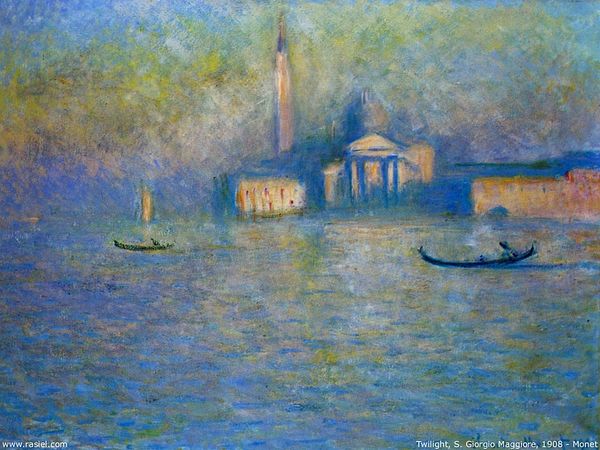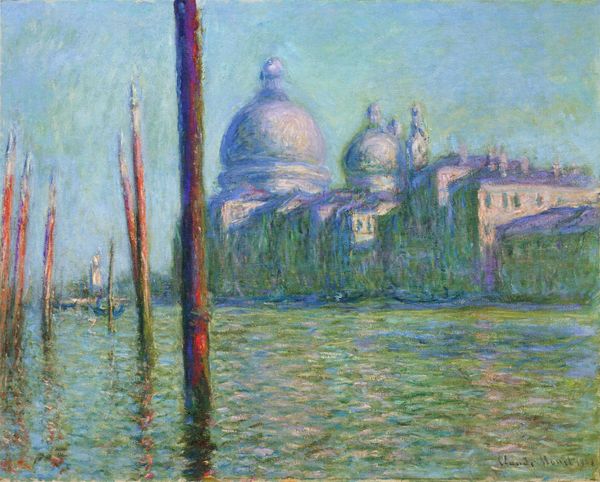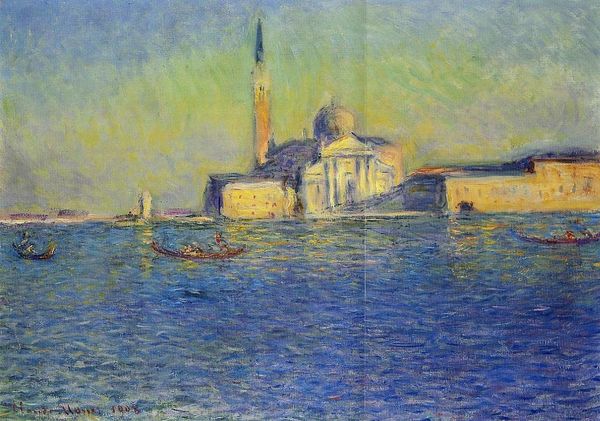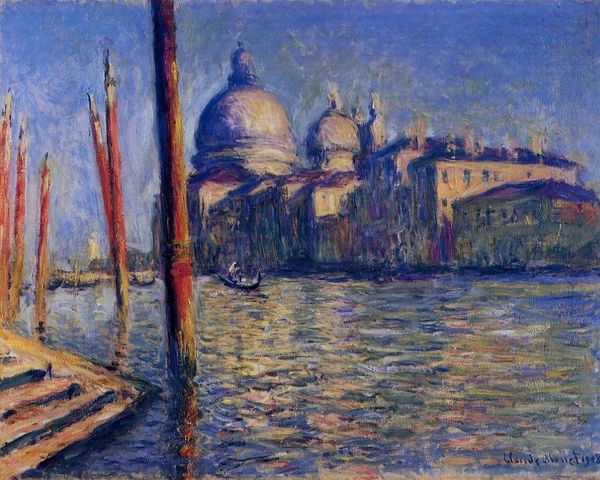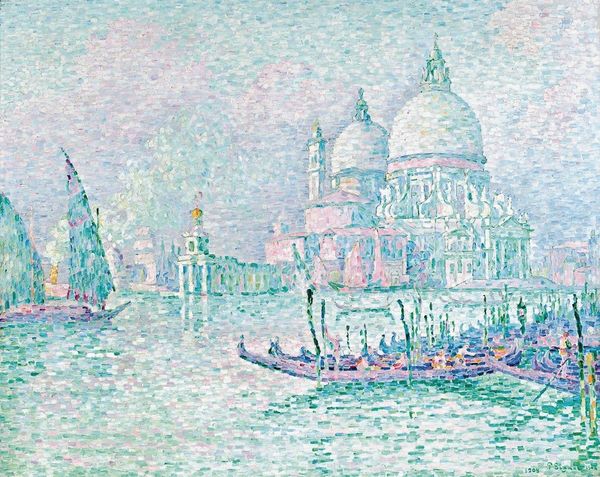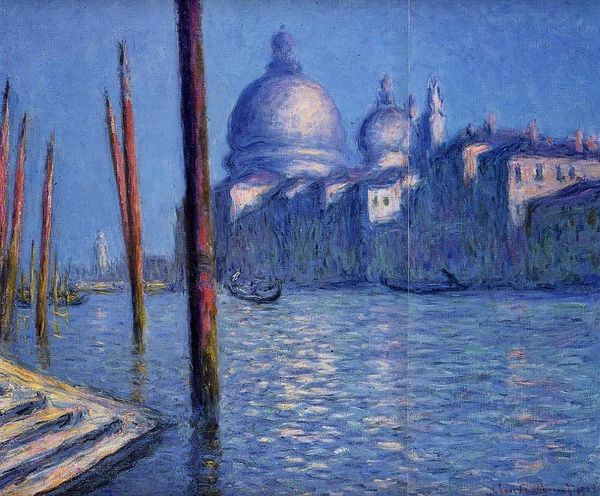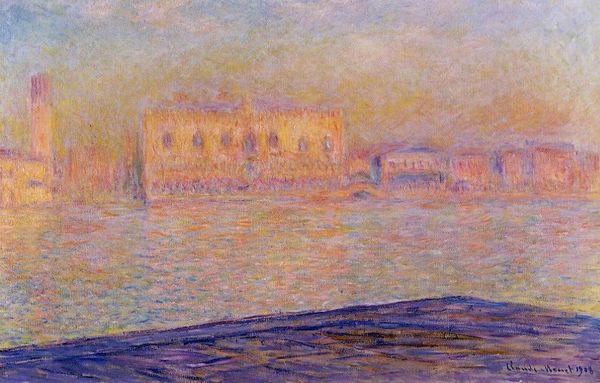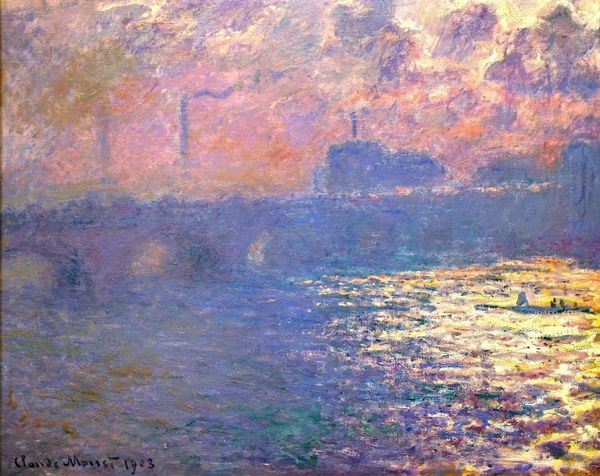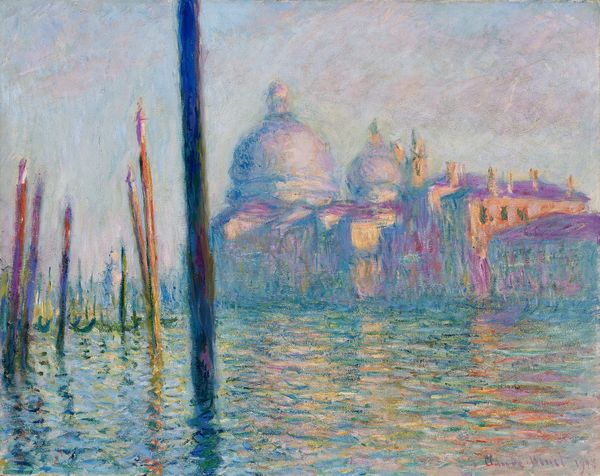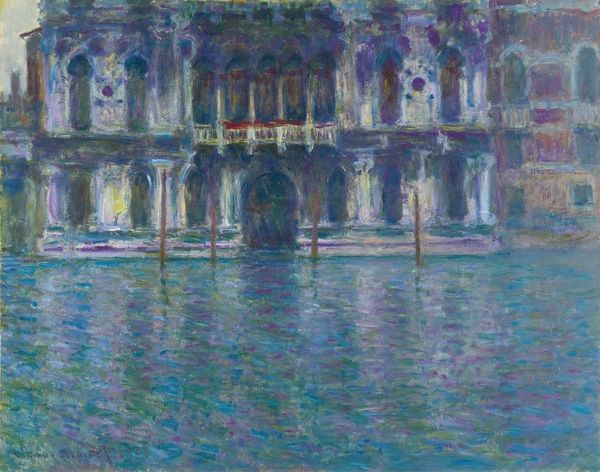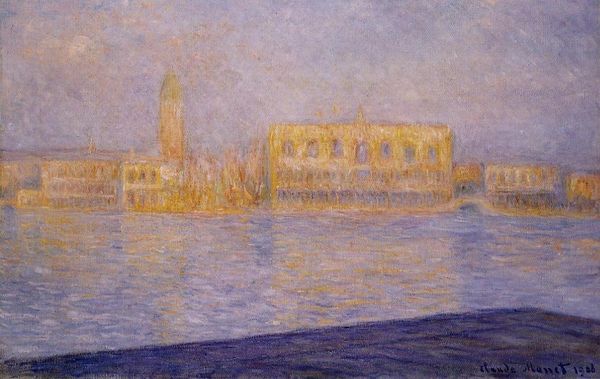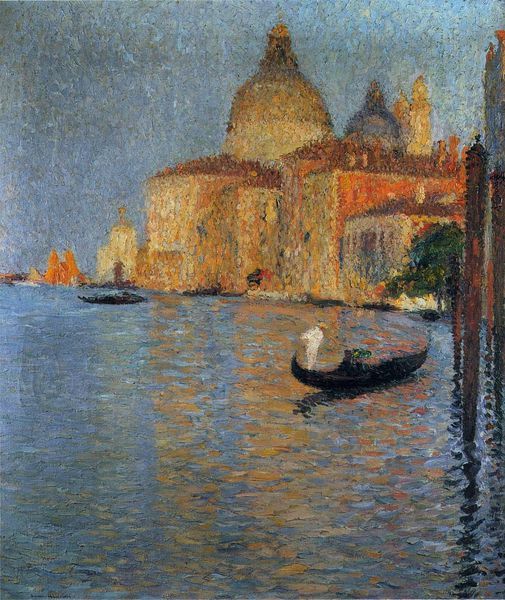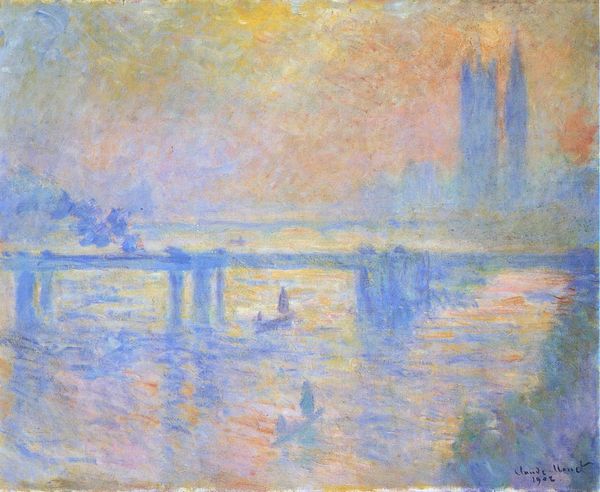
painting, oil-paint
#
venetian-painting
#
painting
#
impressionism
#
oil-paint
#
landscape
#
impressionist landscape
#
seascape
#
cityscape
#
watercolor
Copyright: Public Domain: Artvee
Art Historian: Welcome. We're looking at Claude Monet's painting, "The Church of San Giorgio Maggiore, Venice." Curator: Immediately, I see a city dissolving into light. There's a quiet stillness, but also an undeniable feeling of transience in those brushstrokes. Art Historian: It's quintessential Monet. He visited Venice in 1908, and his series from that trip captured the city in various light conditions. Venice, as a site, has always carried immense symbolic weight. Its unique geographic and political history as a mercantile empire made it an incredibly loaded subject for artists. Monet was drawn there later in his career, like so many other landscape artists Curator: Right, and Monet isn't just painting a pretty picture; he's capturing an atmosphere, almost an elegy for a place and time. It speaks volumes about the ephemeral nature of beauty and power, doesn’t it? And the impact of light, especially, feels almost democratic—it touches everything equally. Though that belies who could afford a gondola. Art Historian: Well, his approach was certainly innovative for his time. The quick brushstrokes and the focus on capturing light and color over precise form broke with academic traditions and redefined landscape painting. Consider, too, the role of the art market, with its growing appetite for impressionistic works. The market helped fuel his trips to Venice. Curator: Precisely. And to see Venice presented through the lens of a fleeting moment—it's like acknowledging that even the most enduring cities are subject to change. I like how the muted palette speaks to climate concerns, making it relevant today Art Historian: The limited palette does have that evocative quality. One could consider the haze as a veiled, metaphorical commentary on the fragility of such iconic locations given industrial and climate changes. Monet’s influence rippled through art history, shaping how artists saw and portrayed the world around them, which should not be understated. Curator: Absolutely, the impressionist move to decentralize human control within a painted landscape set the tone for an entirely new conceptual approach to art. Art Historian: A thought-provoking piece, certainly. Curator: It leaves one with much to reflect on, doesn't it? Thank you.
